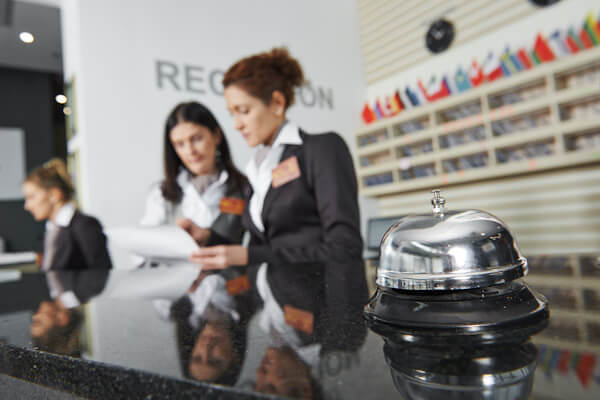How to create a better guest experience: design thinking for hoteliers
It’s no secret that guests expect a personalized experience, whether they’re staying in a hotel or choosing a movie to watch on the couch. Every communication you have with a guest should be tailored to them. But first, to connect with your guests and provide them with the experience they want, hoteliers first have to think like a guest.
One way of getting yourself to think like a guest is to use the design thinking process. This five-step process taught in business and design school the world over, is a simple way to come up with effective, actionable ideas. Because each hotel comes into the process with different needs, the outcomes will be different for each hotel.
Step 1: Learn about your guests
The first step is to empathize with your guests. In this step, you’re collecting information. Put yourself in your guests’ shoes. Think about their wants and needs. Perhaps the best and easiest way to do this is to use the information you already have on your guests. Revinate’s database insights are a great way to find this information. Learn as much as you can about what they want and how they want to be communicated with. In particular, look at:
- What upsell items get booked the most?
- What is the typical booking window for your hotel?
- What communications have the most engagement?
Step 2: Define your guests’ needs
The next step is to define the “problem” you’re solving for. In this step, you’re taking all of the information that we collected in the first step, synthesizing it, and coming up with a clearly defined need that you can “solve” in the following steps. How? Look for patterns in the data you’ve collected.
Break your guests up by persona. For example, start bucketing your “business traveler” needs together and do the same for your leisure travelers feedback. Look at the booking channel used, length of stay, weekend vs. weekday guests, and other dimensions to build an audience segmentation strategy. Maybe your hotel is really good at getting business travelers in the door but is struggling to get leisure travelers to convert. At the end of this phase, you should have a clear idea of what specific issues you want to address.
Step 3: Brainstorm and come up with creative solutions
In this step, you’re going to take the problems identified in the previous step and find creative solutions for them. This is a brainstorming phase, so there are no “bad” ideas.
To make this brainstorming session effective, you want to make sure to include key stakeholders. Sit down with your marketing manager, revenue manager, as well as key folks from operations and the front office and brainstorm effective strategies to the issues you’ve identified. For example, taking the problem “Leisure travelers seem to love booking the property, but our pre-arrival upsell emails are not generating the revenue we budgeted.” we might iterate on that to find solutions:
- Look at the highest performing / lowest performing upsells. You might remove the low performers and brainstorm new ones to take their place.
- You might Adjust pricing of upsells or upgrades to make them more desirable.
- You might rebrand your upsells to make them more attractive.
- You might rewrite/redesign your email to make it more user-friendly and increase conversions. This could include optimizing the CTA by moving it above the fold in the email, for instance.
Step 4: Build prototypes of your ideas
In the prototype phase, you’ll be taking the short list of solutions you came up with in the last step, and starting to build solutions that “solve” them. These solutions will not be set in stone, so don’t stress out too much.
Let’s take the same example as last time: “Leisure travelers seem to love booking the property, but our pre-arrival upsell emails are not generating the revenue we budgeted.” In this step, we might create mockups or prototypes of the new emails we think will help solve the problem. That might be rearranging content, reworking copy, or changing design elements. You’ll create different versions of these and share them internally. Collect feedback and determine whether these prototypes meet your needs? Is it close enough that we can iterate on it, or does it miss the mark enough that we should discard it?
Keep trying different versions of your solutions until you think they’re ready for small scale testing with potential guests.
Step 5: Test the ideas you’ve come up with
The final step is to test your potential solutions with your guests. It’s important to start small. Using the same example as the previous step, take a small segment of your guests and A/B test your current email compared to the new one you’ve devised. Identify the key metrics you’re looking to improve. If the test succeeds, you can iterate again and then expand the scope. Always be sure to analyze what’s working and what’s not…and keep iterating and improving.
Ideally, you’ll continuously be in this cycle of collecting information, coming up with new ideas, testing them, and iterating based on what you’ve learned.
If you want to learn more about how to think like a guest, check out Revinate’s webinar, Creating Perfect Guest Experiences Through Technology.
Related Posts

Insights that drive results
Subscribe now to get the latest content
This site is protected by reCAPTCHA and the Google Privacy Policy and Terms of Service apply. *Required fields.



